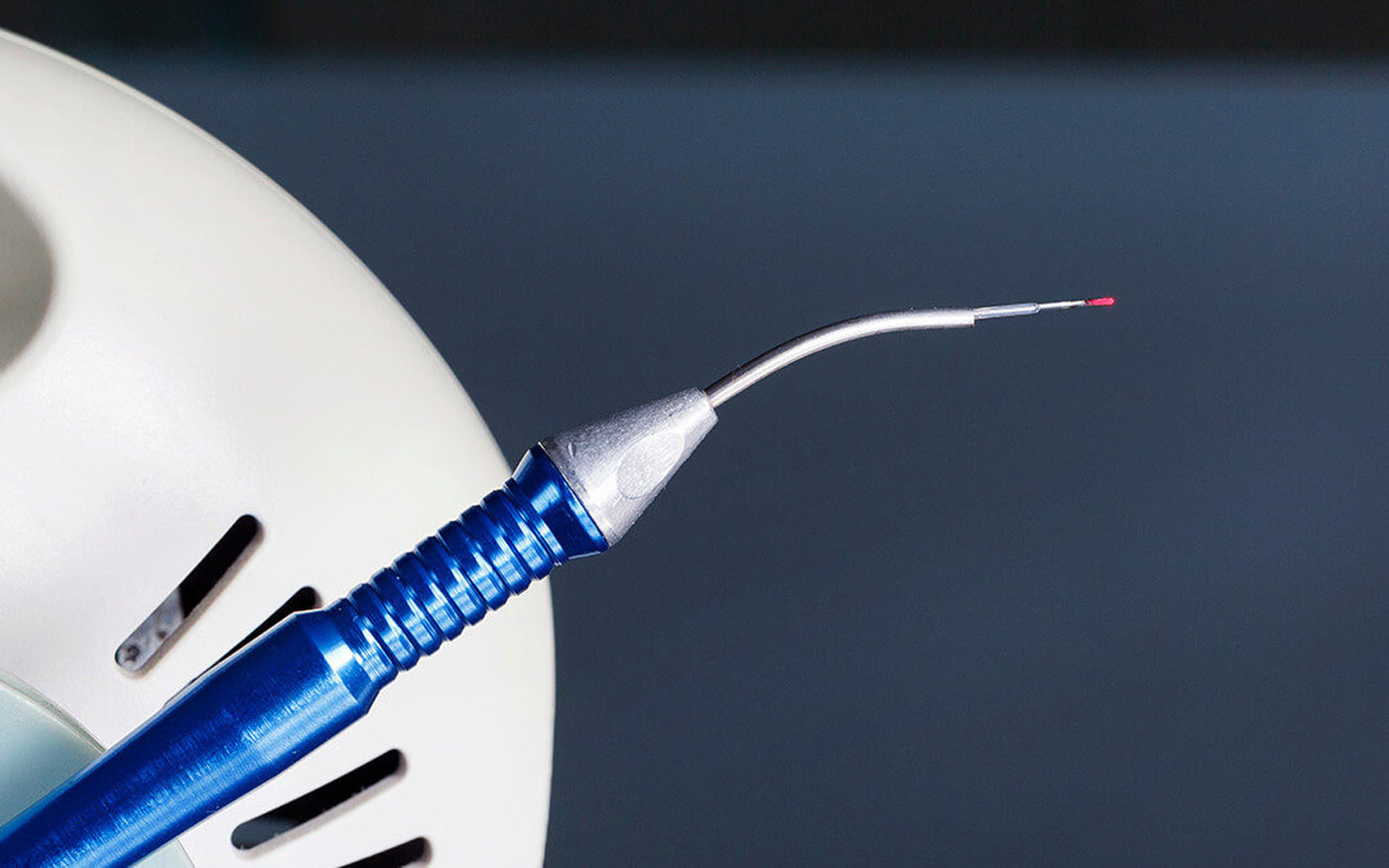A trip to the dentist can be a stressful experience for many people, and for children in particular. A local pediatric dentist and a dentist specializing in neuromuscular dentistry have embraced cutting-edge technology to create a calming, anxiety-free environment for their patients.
Dr. Mark Stapleton of Cascade Kids Dental, with a Lane County practice since 2007, recently moved his office from Springfield to a brand-new building in Southeast Eugene. As a pediatric dentist, Stapleton is used to the stress dental work can cause for young patients. To address the issue, Stapleton and his staff use a CO2dental laser for fillings and soft tissue work, with little to no anesthetic beyond occasional topical application.

In a room where everyone wears protective eyewear, an invisible laser from an apparatus that looks a little like a Pixar creation targets the area where the attention is required. For fillings, the laser gets absorbed by hydroxyapatite, a component in teeth, “breaking down the outer layer of the tooth one little microscopic bit at a time,” Stapleton explains. This process removes the tooth decay, and when the process is complete, the cavity is filled and the tooth repaired. In other words, Stapleton says, a CO2 laser treats patients without two of the most unpleasant words in pediatric dentistry: shots and drilling.

According to Stapleton, CO2 dental lasers work on the “gate control theory of pain.” “You’re pulsing that tooth with little pulses of laser light, repeatedly, very, very rapidly, and it over-stimulates the pulp on the inside of the tooth,” confusing pain signals, Stapleton says.
He likens it to riding a bike over gravel or a rough road. “You’re bouncing,” Stapleton says, and afterward, “your hands are not numb like a local anesthetic, but the sensation isn’t normal. You’ve overstimulated your hands, and your brain is like, ‘All right, we’re turning that off.” The effect typically lasts around 8 minutes.
A CO2 laser won’t work for all pediatric dental procedures: Tooth extractions, for example, are still done the old-fashioned way. The device is also not the right choice for all patients. It’s a kid-by-kid decision. Some anxious children prefer the experience, while more tolerant young patients also like it because even those who don’t mind dental work grow tired after repeated rounds of numbing when kids “really burn out, and they don’t like us as much,” Stapleton says.
Dr. Ben Sutter, with an office on Oakway Road in Eugene, also offers his patients a CO2 laser, especially to treat tongue-ties (when a band of tissue connects the underside of the tongue to the floor of the mouth, keeping the tongue from moving freely). Sutter practices general dentistry with specialized training in cosmetic dentistry, as well as chronic pain treatment for conditions like TMJ and whiplash. He often treats patients from all over the country who travel to Eugene for his care.
The CO2 laser also helps treat lip ties — which occur when the lips are attached to the gums or mouth too tightly, often affecting infants who breastfeed — with only topical treatment, Sutter says. “I wouldn’t say it’s pain-free,” but it’s quick, he adds, and it’s the kind of soft-tissue work for which this new dental technology is well suited.
Dr. Sutter also employs cone beam computed tomography (CBCT) to improve their patients’ experience. CBCT allows dentists and their staff to see greater detail than with other imaging tools. The overall experience is quicker and more comfortable than X-rays, which take up to 30 seconds to complete. CBCT gets the job done in around 4 seconds, using less radiation. CBCT is like a CT scan. Stitching the images together creates a 3D model of a patient’s skull. The images can then be cross-sectioned for an even closer look.
Sutter mentions the ease with which CBCT allows him to see soft tissue. “You can see cloudiness in the maxillary sinuses,” Sutter explains. “You can see restricted airways so you might refer them to an ENT,” or he says he might refer patients to a respiratory or sleep specialist.
These aren’t the only dental offices in Lane County using CO2 lasers and CBCT, and all agree that tools of this kind are the future of oral care. They agree that our community adopts technological developments of this kind more than other communities.
For patients unsure about these new dental technologies, Sutter recommends checking out his YouTube channel, where many of the tools are demonstrated. “Patients are telling their stories,” Sutter says, and through that channel, many of his patients familiarize themselves with these new technologies before they even come in for their appointment.
Adding a CO2 laser to his practice, Stapleton says, is an investment in a kid’s sanity. “I’ve found it an engaging and fun challenge to have a new tool to use,” he says. “This tool helps kids have a comfortable experience,” providing “an opportunity to make kid’s experiences a lot better.”
Cascade Kids Dental
2991 Hilyard St.
541/736-5525
Dr. Ben Sutter
497 Oakway Rd., Suite 200, Eugene
541/683-7500


